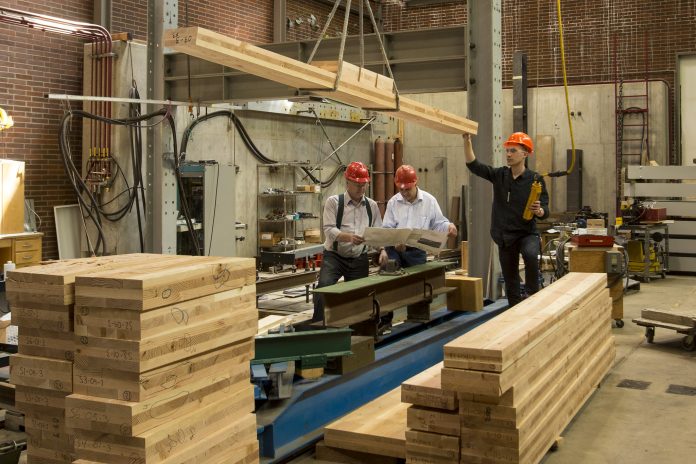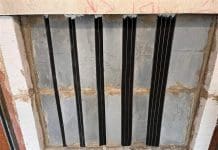Cross laminated timber (CLT) pioneers have invested in a new fire research and compliance framework to provide scientific data for CLT fire performance
Considered a robust, fast, clean, sustainable and renewable method of construction, cross laminated timber (CLT) is now widely acknowledged as having a vital role to play in reducing CO2 emissions to mitigate the climate change crisis.
Existing buildings and new construction account for nearly 40% of the UK’s carbon dioxide emissions according to a World Green Building Council report published in September 2019.
Specialist contractors and manufacturers operating in the sector firmly believe that mass timber technology like CLT provides the solution to many of the challenges the construction industry is facing today.
In collaboration, leading CLT manufacturers are investing half a million pounds in developing a new fire safety compliance framework for CLT to meet the amended Building Regulations in England.
Over the next 18 months the research supporting the new framework will include a series of compartment fire tests for commercial and multi-family residential type buildings to generate new knowledge in support of a safe design envelope for CLT buildings.
Robust fire safety designs
The purpose of this ongoing research is to provide scientific data for CLT fire performance that will support designers in the delivery of robust fire safety designs.
It ultimately aims to allow the ministry of housing, communities & local government (MHCLG) to view CLT as a construction material suitable for all buildings including where CLT forms part of the external wall construction irrespective of height.
In carrying out this research as an industry, it will also establish benchmark testing for all CLT manufacturers leading to an enhanced and broader understanding of CLT performance in fire.
The project is a collaboration of the largest suppliers in Europe supported by leading fire and structural engineering experts. The project proposals and outputs will be reviewed by an independent industry stakeholder group.
Data from the research will be released as and when it becomes available during the course of the programme.
Knowledge and competency
The CLT industry in the UK, supported by the Structural Timber Association (STA) is also responding to recent statements raising concern about the gaps in knowledge and competency relating to mass timber by providing evidence of the product fire performance and data to support competent professionals in the design of mass timber buildings for fire.
This evidence aims to enhance the understanding of fire performance of CLT, in terms of compartment fire behaviour, the response of structural elements and hazards associated with external fire spread.



![[Video] Fireco: 80 new fire doors required for residential flats in London](https://www.pbctoday.co.uk/news/wp-content/uploads/2025/04/2024-06-01-Lords-view-one_1200x750_004-218x150.webp)

![[VIDEO] Making DorTrak reports easy to read with Fireco Inspecting fire doors at Fireco, firedoor technology, 2023](https://www.pbctoday.co.uk/news/wp-content/uploads/2024/04/JPZ_2364-web-218x150.jpg)









Energy Performance Certificates (EPCs) are essential for all buildings when they are built, sold or rented out; and Display Energy Certificates (DECs) are necessary for any large, public buildings used by public bodies or institutions.